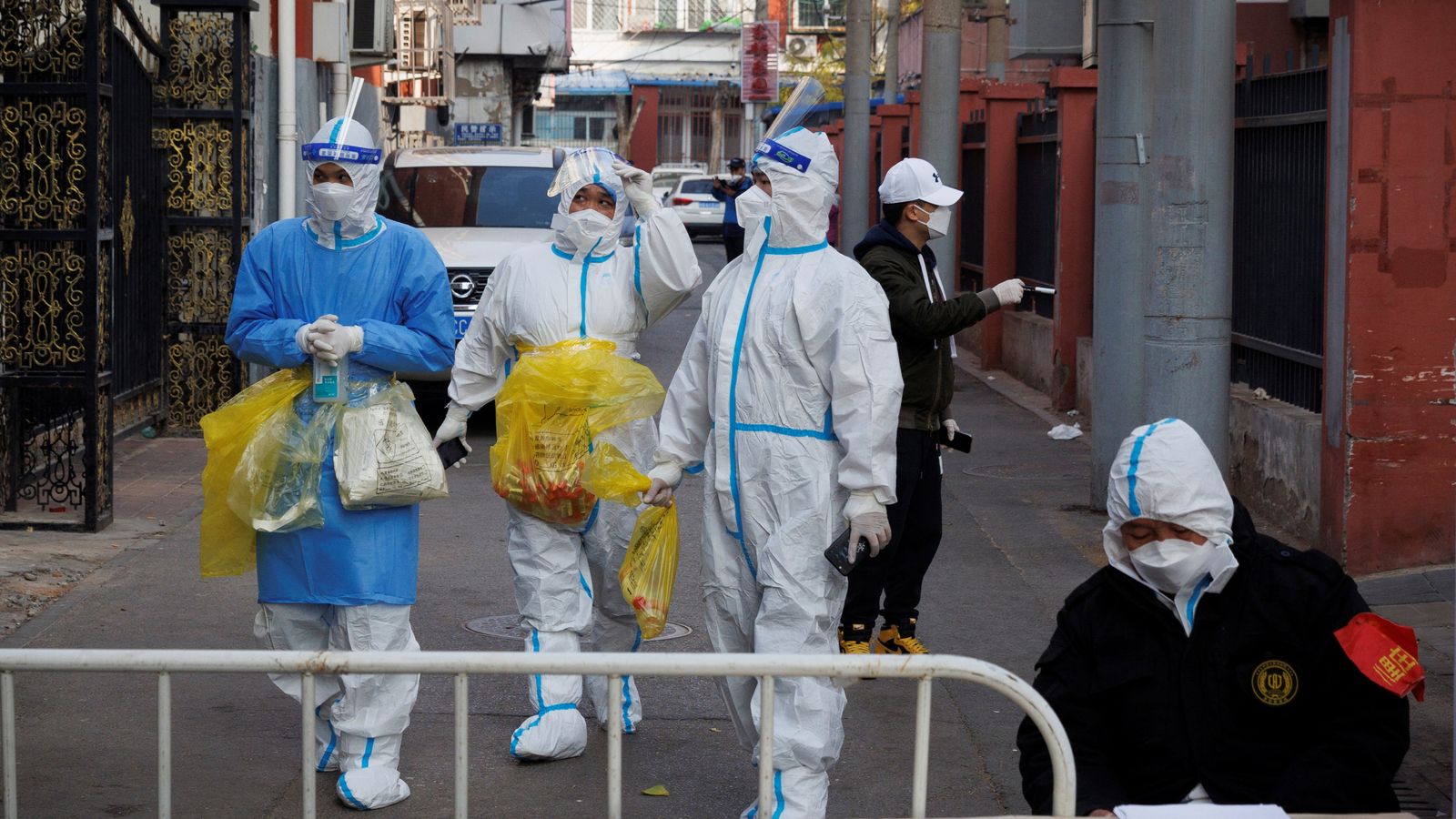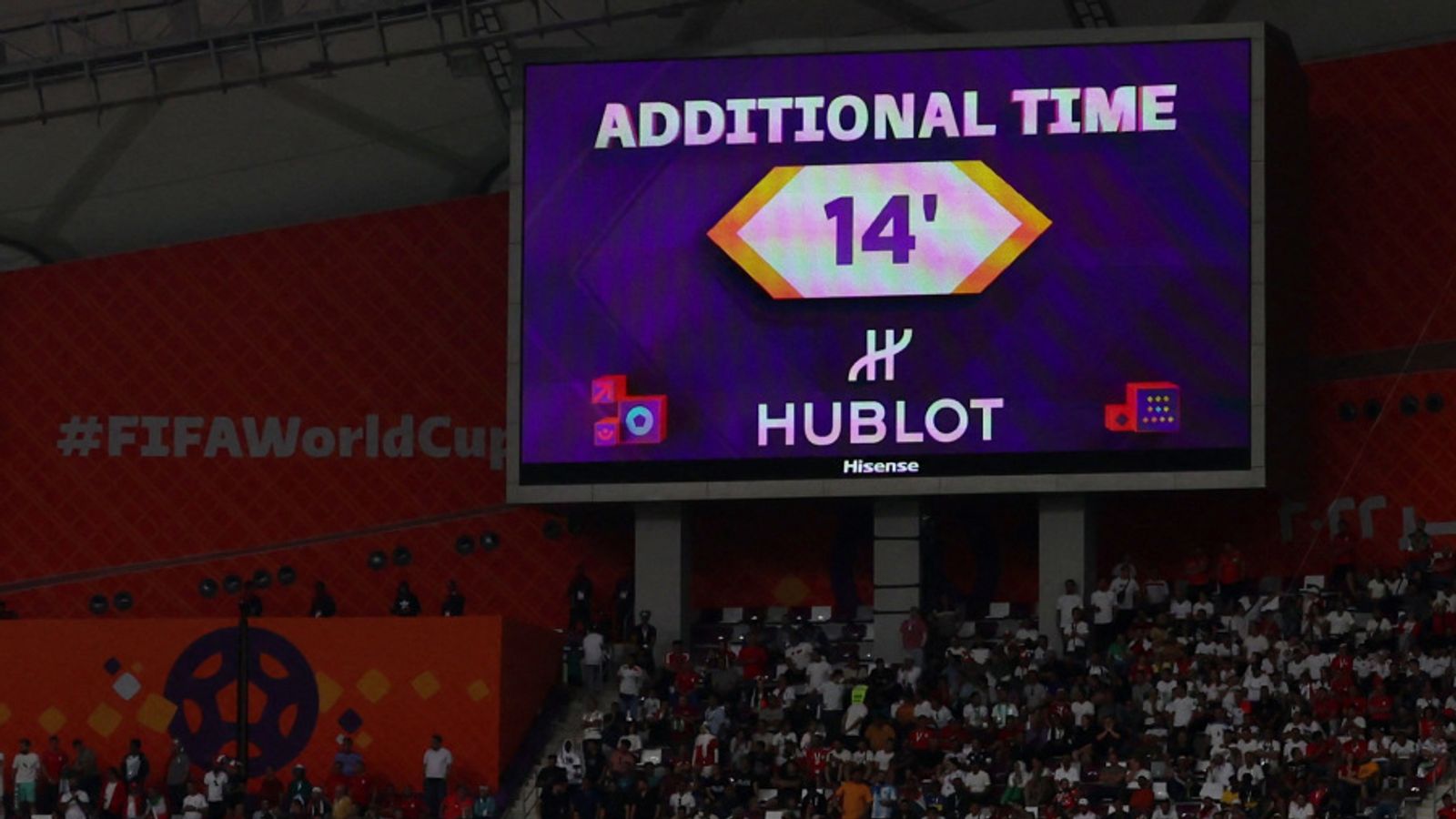In Beijing, business after business is bolted shut.
The authorities won’t use the word, but this city is essentially in lockdown.
In a number of districts across the capital, all non-essential shops are shut, restaurants and cafes are open for takeaway only and people are being asked to work from home.
COVID cases here have tripled in a week, they are at the highest level ever recorded.
While many have greeted the latest rules with weary acceptance there is clearly a price being paid by people for nearly three years of restrictions.
Leading shopping districts stood eerily silent and traditional huntong alleys, usually teeming with people, had just a trickle.
Mr Zheng’s coffee shop was still open, but only for takeaways.
China zero COVID: Beijing imposes negative coronavirus test requirement in all public places after cases rise
Lockdown frustration grows in China’s COVID epicentre despite a surge in cases
COVID-19: China announces first coronavirus death in six months as it battles outbreaks
“Business has not been good this year and it’s even worse recently, because of the pandemic,” he says, “You see, there are no people in this huntong.”
But elsewhere in the country, the anger goes much further.
In the central city of Zhengzhou workers at Foxconn, Apple’s biggest assembly plant, clashed violently with police.
Videos on Chinese social media show workers throwing large objects at authorities and smashing surveillance cameras.
There has been a COVID outbreak at the plant, many workers have been unable to leave and some are now saying there has been insufficient food and promised bonus payments have been delayed.
One video shows numerous police and workers in hazmat suits beating a worker with batons.
Please use Chrome browser for a more accessible video player
Elsewhere, being stuck at home is wearing people down. In the city of Chongqing, Zheng Meng took a video of himself attempting to leave his apartment.
“You can’t leave,” a pandemic worker tells him, “this compound is high risk”.
It is rare for someone in China to speak so plainly, but he was very clear in his opinion that China is getting this wrong.
“The World Cup makes the government embarrassed because everybody at home is still watching the TV and there’s no masks for the other people,” he says.
“Why are the Chinese different from the rest of the world? Because our body condition is weaker? Or the Omicron in China is stronger? There’s supposed to be a reasonable reason, there’s no reason at all. They just force us to stay at home.”
Just a week or so ago there had been real hope that things might start easing up. The government has called for the rules to be ‘optimised’, for the response to be more targeted and less blanket.
But it’s faltered in the face of surging infections.
The problem is that while local government authorities have been instructed to try and ease COVID restrictions, it seems they have not been instructed to hold their nerve when cases inevitably rise.
Read more:
‘Situation is getting worse across China’
Thus, under immense pressure to keep numbers low, they’ve resorted to the familiar tactics of closing things down.
It illustrates the fundamental trap of China’s zero COVID agenda – there is no way out of it without rising infections and deaths, and the government has spent three years telling people that is unacceptable.
There are many people in China who support zero COVID, plenty are afraid of the virus.
It may be one obstacle in the coming months for a regime that still faces many.










